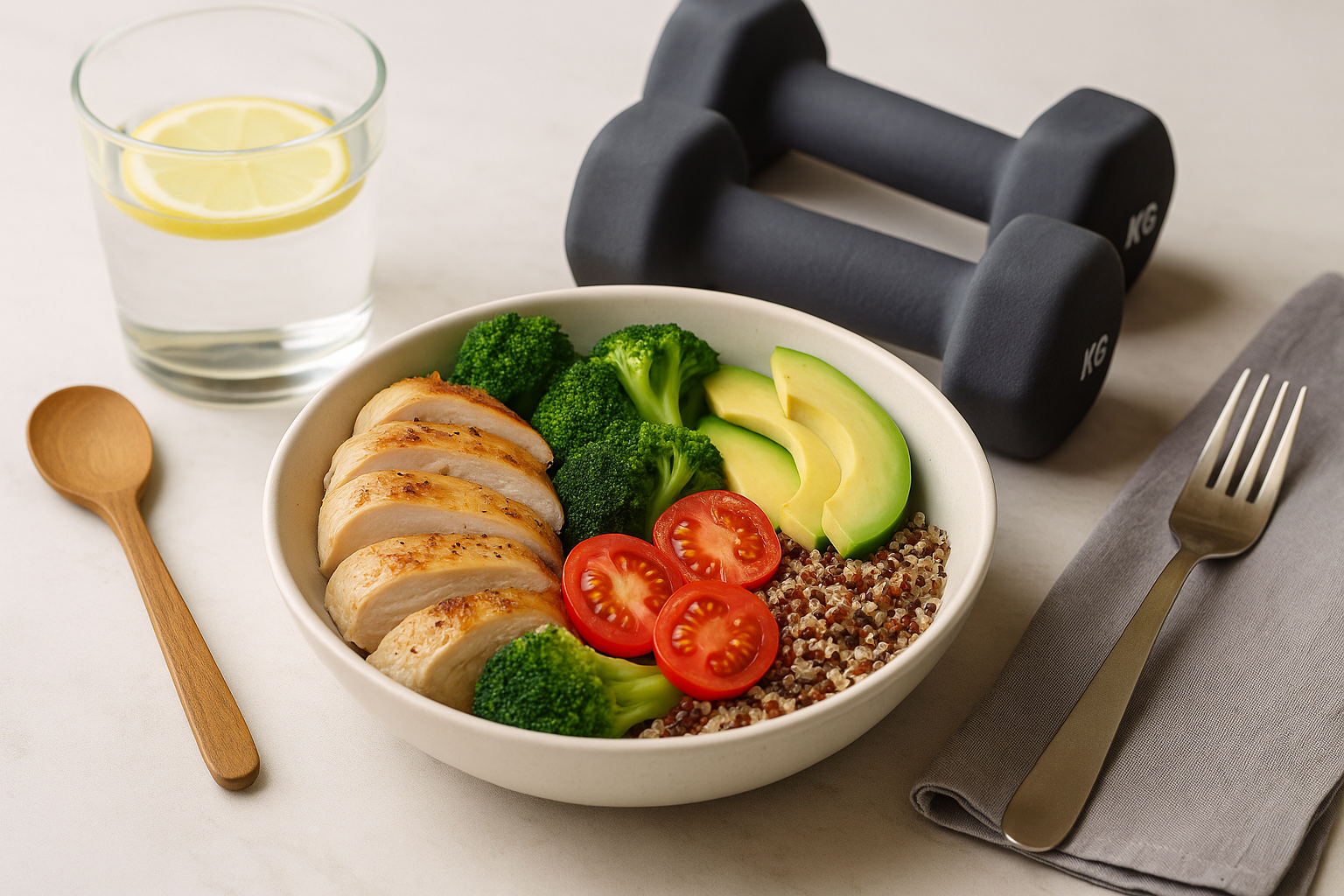If you’re feeling low on energy, struggling with stubborn fat, or constantly confused about what to eat, you’re not alone. Between fad diets, conflicting advice on social media, and marketing hype, it’s no wonder people feel overwhelmed by nutrition. But eating for fat loss and sustained energy doesn’t have to be complicated. In fact, when you focus on the right principles, you can make real progress without starving yourself, counting every calorie, or giving up your favorite foods.
In this article, we’ll break down exactly how to structure your nutrition for fat loss and energy. No gimmicks, just science-backed strategies you can actually stick to.
Why Nutrition Matters More Than You Think
Nutrition is more than just fuel. What you eat impacts your hormones, metabolism, mood, energy, digestion, and even your sleep. If you’re constantly tired or struggling to lose weight despite exercising, chances are your food choices need a reset.
The good news? Once you start eating strategically, your body will respond.
Step 1: Focus on Food Quality, Not Just Calories
Yes, calories matter. But the quality of your calories matters more when it comes to fat loss and stable energy.
Prioritize:
- Whole foods: Lean proteins, veggies, fruits, healthy fats, and complex carbs
- Minimal processing: If it comes in a bag or box, read the ingredients
- Anti-inflammatory foods: Berries, leafy greens, olive oil, fatty fish, spices like turmeric and ginger
Avoid ultra-processed foods loaded with added sugars, seed oils, and artificial ingredients. These not only make you hungrier but also spike your blood sugar and drain your energy.
Step 2: Balance Your Macros

Macros = macronutrients: protein, carbs, and fats. All three are essential. The key is balance.
For fat loss and energy:
- Protein: Build and preserve lean muscle, reduce cravings, boost metabolism
- Fats: Support hormones, stabilize blood sugar, fuel the brain
- Carbs: Fuel workouts, replenish glycogen, support recovery
Aim for every meal to include a mix of:
- A palm-sized portion of protein
- A thumb of healthy fat (e.g., nuts, seeds, avocado, olive oil)
- A cupped hand of slow-digesting carbs (e.g., quinoa, oats, fruit, sweet potatoes)
- A fist of colorful veggies
Step 3: Eat Regularly, But Don’t Overeat
Skipping meals or eating too frequently can both sabotage your energy levels and fat-burning goals.
Tips:
- 3 main meals + 1 small snack works well for most people
- Eat mindfully – slow down, chew properly, stop when satisfied (not stuffed)
- Don’t fear hunger – it’s natural between meals. Just don’t let it become extreme hunger that leads to overeating.
Step 4: Hydration & Digestion = Energy Game Changers

Dehydration is one of the most overlooked causes of fatigue and hunger.
- Aim for 2–3 liters of water daily (more if you exercise or sweat a lot)
- Start your day with a glass of water before coffee
- Add a pinch of sea salt to support electrolyte balance
Digestion also matters: bloating, gas, and irregularity are signs your gut needs help.
- Eat slowly
- Add probiotic-rich foods (e.g., yogurt, sauerkraut)
- Consider digestive enzymes or probiotics if needed
Step 5: Ditch the All-or-Nothing Mentality
You don’t have to eat “perfectly” to get results. In fact, chasing perfection leads to burnout.
What works long-term is:
- Consistency, not extremes
- Awareness, not obsession
- Progress, not perfection
Plan for flexibility. Leave room for birthday cake, date night, or a weekend pizza. Just get back to your rhythm afterward. One meal won’t ruin your progress—just like one salad won’t create it.
Common Pitfalls to Avoid
- Under-eating: Leads to fatigue, cravings, and metabolic slowdown
- Over-reliance on caffeine: Masks tiredness but increases stress hormones
- Too much cardio, not enough strength training: Muscle helps burn fat and stabilize energy
- No clear structure or plan: Leads to random eating and stalled progress
Sample Fat-Loss Energizing Meal Plan (1 Day)
Breakfast:
- 2 eggs scrambled with spinach and mushrooms
- 1 slice rye bread with avocado
- Black coffee or green tea
Lunch:
- Grilled chicken or tofu
- Roasted sweet potato wedges
- Mixed greens with olive oil dressing
Snack:
- Greek yogurt with berries and chia seeds
Dinner:
- Salmon or lentil patty
- Quinoa or cauliflower rice
- Steamed broccoli with tahini drizzle
Looking to build lasting energy while improving your body composition? Don’t miss our popular post: Always Tired and No Energy? Discover What’s Really Draining You
Final Thoughts: Sustainable Nutrition = Sustainable Energy

You don’t need a crazy detox or diet. You need simple, smart habits that you can follow day in and day out. The more balanced your meals, the more balanced your energy—and your results.
If you’re ready to take your nutrition to the next level and want a complete, step-by-step system, check out my best-selling course:
👉 Nutrition & Diet Planning Masterclass | Fat Loss, Muscle Gain & Health
It’s a highest-rated nutrition course, packed with real strategies, meal planning tips, and tools to help you feel and look your best—without restriction.

Leave a Reply